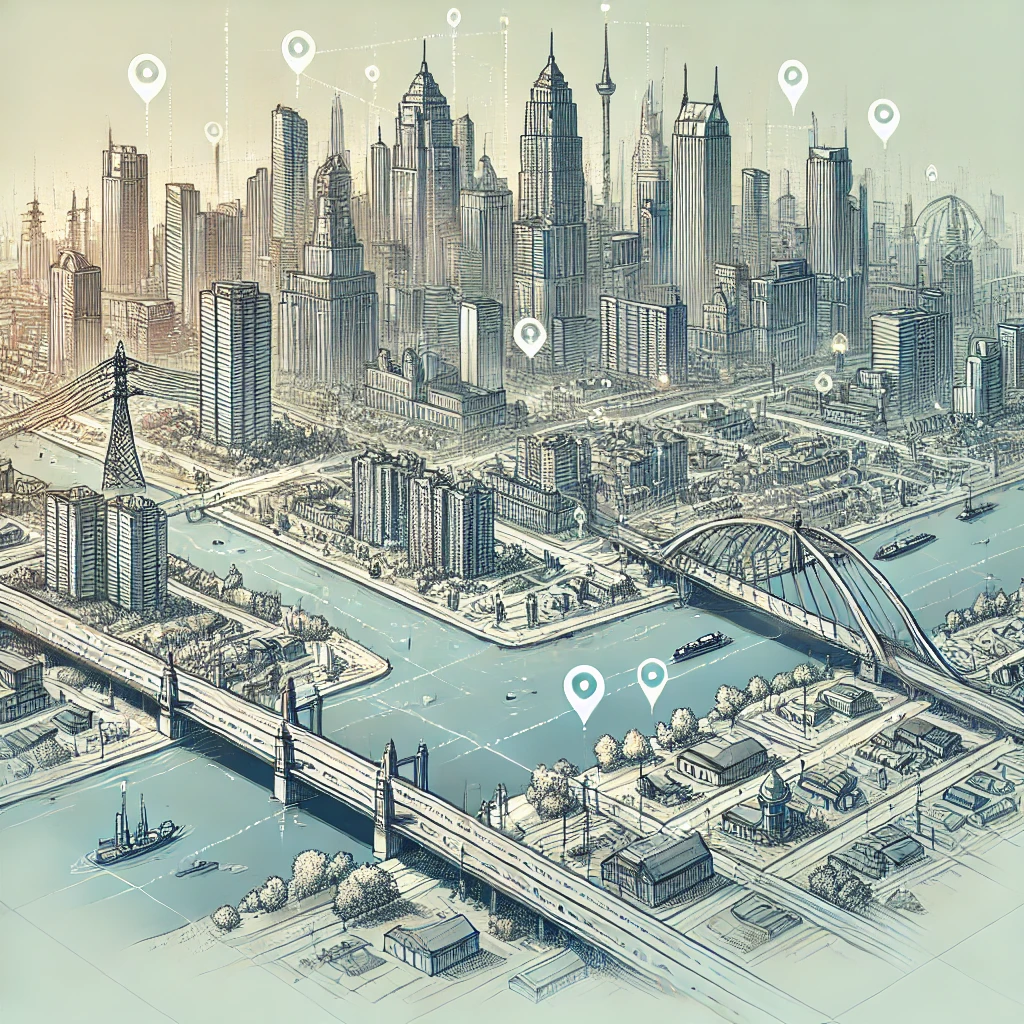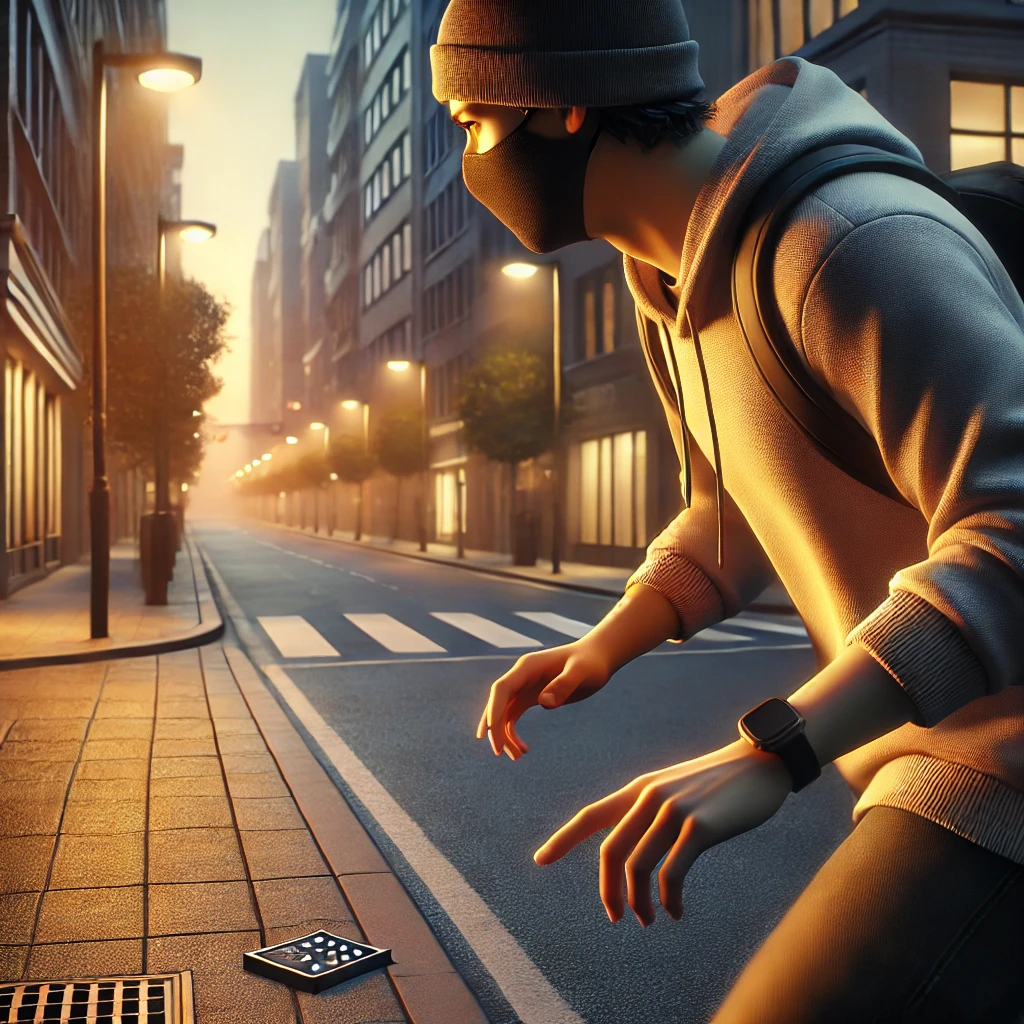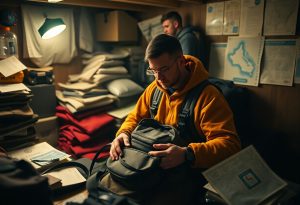In an urban crisis, traditional navigation tools, like GPS and public transit, may be unavailable. Without these, navigating city streets and dense neighborhoods becomes challenging. This post provides essential grid-down navigation techniques for urban survival, offering practical strategies for finding your way safely, even when systems fail.
Mastering these skills equips you to move through urban environments with confidence and avoid dangerous areas or overcrowded streets. Here’s a breakdown of the methods and mindset needed for grid-down navigation in a city.
Understanding Urban Grid-Down Navigation Challenges
Urban environments present unique navigation challenges during a crisis. With streets that may be blocked, landmarks that are difficult to recognize, and hazards created by crowds, navigating in a grid-down scenario is more about caution and strategy than speed.
- Crowds and Roadblocks: During a crisis, crowded streets and panicked groups create obstacles. Abandoned vehicles, barricades, or police presence can also make routes unsafe.
- Unreliable Landmarks: In urban areas, familiar landmarks like stores or transit hubs may be unusable. Learn to rely on static, permanent features such as buildings, bridges, and natural elements.
- Situational Awareness: Navigating in a crisis requires high levels of situational awareness. Avoid areas with large gatherings, potential dangers, or visible signs of unrest, and plan your movement carefully.
Key Techniques for Urban Grid-Down Navigation
Here are core methods for navigating in an urban environment without relying on GPS or other technology.
1. Use Fixed Landmarks for Orientation
Fixed landmarks like tall buildings, bridges, and communication towers become crucial in grid-down navigation. By using these landmarks, you can orient yourself and move through the city more effectively.
- Identify Key Landmarks: Before a crisis, familiarize yourself with tall or unique structures visible from different city areas. They will serve as reference points.
- Practice Mental Mapping: Rather than relying on maps, practice visualizing your route. Knowing where major landmarks are in relation to each other improves your sense of direction.
2. Memorize Street Layouts and Major Routes
Understanding your city’s layout is crucial for navigating safely without GPS.
- Learn Major Roads: Get familiar with the main roads, backstreets, and any shortcuts around your home and work areas. This knowledge will help you quickly find alternative routes.
- Plan and Practice Routes: Walk through potential escape routes or alternate pathways. Practice these routes so they become second nature, allowing you to navigate more confidently.
3. Blend into the Environment with Grey Man Theory
Staying unnoticed can be one of the most effective navigation strategies in an urban crisis. Grey Man Theory suggests blending into your surroundings to avoid unwanted attention.
- Wear Neutral Clothing: Dress in colors that don’t draw attention, avoiding tactical or flashy gear. Carrying a regular-looking backpack rather than a bulky survival pack helps keep a low profile.
- Move with Confidence: Panic or hesitation can make you a target. Walk calmly and with purpose, maintaining an awareness of who and what is around you.
4. Time Your Movement
Choosing the right time to move can help you avoid crowds, reduce exposure to risk, and allow for quieter, safer navigation.
- Move During Low-Traffic Hours: Early morning or late at night may be safer times to travel, depending on the situation. Avoid peak hours, especially in areas with potential for unrest.
- Avoid Known Gathering Points: In a crisis, people tend to gather at locations like grocery stores, hospitals, and public transit hubs. Plan routes that avoid these hotspots.
5. Plan and Practice Bug-Out Routes
Having multiple pre-planned bug-out routes gives you flexibility in choosing the safest path during an evacuation or emergency.
- Scout Several Routes: Know at least three routes that lead you out of the city. Practice them periodically, adjusting as city construction or other changes affect your path.
- Identify Safe Zones: Look for places you can rest, gather supplies, or take cover along your routes. Parking garages, parks, and other open spaces can offer temporary safety.
6. Observe and Adjust in Real-Time
In an urban environment, conditions can change rapidly. Staying adaptable is critical to safe movement.
- Monitor Crowds and Traffic: Pay attention to signs of congestion, such as stalled traffic or groups of people gathering. If you notice these indicators, adjust your route accordingly.
- Use Windows and Reflections: When moving along streets, use windows or reflective surfaces to check behind you without turning around. This discreetly enhances your situational awareness.

Essential Gear for Grid-Down Navigation
Having the right tools can make a significant difference in your ability to navigate effectively. Here are some essentials:
- Map and Compass: Always carry a physical map of your city and a compass. These tools remain functional when digital navigation systems fail.
- Binoculars: A small pair of binoculars can help you survey your route from a distance, allowing you to avoid potential hazards.
- Flashlight or Headlamp: Navigating in low light or after dark is easier and safer with a flashlight or headlamp. Opt for models with red light options to maintain a low profile.
Tips for Building Situational Awareness
Good situational awareness can alert you to potential dangers and help you make quick, informed decisions.
- Stay Mindful of Surroundings: Pay attention to unusual sounds, movements, or changes in behavior around you.
- Observe Natural Indicators: Environmental clues like rising smoke or sudden quiet can signal trouble. Train yourself to notice these subtleties.
- Practice Staying Calm: In a crisis, keeping a level head is essential. Panic can cloud your judgment and make you less aware of your surroundings.

Conclusion
Urban grid-down navigation requires a mix of practical skills and the right mindset. By familiarizing yourself with city landmarks, planning multiple routes, and practicing situational awareness, you improve your chances of moving safely and confidently through an urban landscape during a crisis. Remember, preparation and adaptability are your best assets when technology and infrastructure fail.

